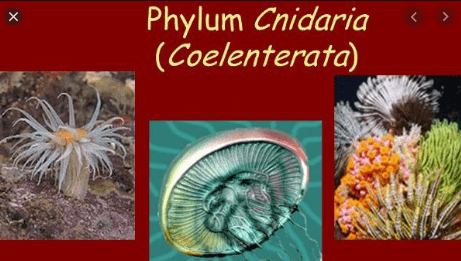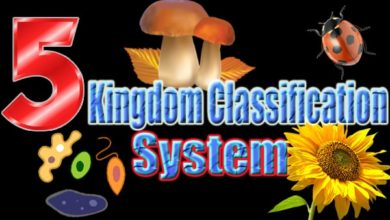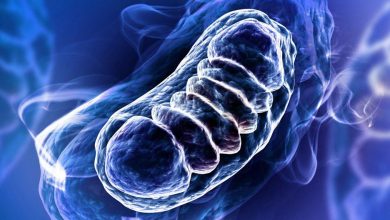Phylum Coelenterata/Cnidaria Characteristics and Examples
Phylum Coelenterata animals are aquatic and are marine. they are also  called Cnidarians. they are metazoa and multicellular, diploblastic and radially or biradially symmetrical are some Characteristics of Coelenterata. they are also known as hollowed-bodies animals.
called Cnidarians. they are metazoa and multicellular, diploblastic and radially or biradially symmetrical are some Characteristics of Coelenterata. they are also known as hollowed-bodies animals.
Characteristics of Coelenterata or Cnidaria
- Name of the phylum: These animals have special cells called cnidocytes. So they are also given the name of Coelentrata or Cnidaria. Cnidocytes cells give rise to nematocysts. These are stinging cells. It is the characteristic feature of this group.
- Body organization: They show tissue grade organization and they form organs.
- Body layers: They are diploblastic. Two germinal layers are formed during development. The outer layer is ectoderm and the inner layer is endoderm. All the parts of the body are formed from these two layers:
- Ectoderm: It forms the outer covering. Some cells of ectoderms form nematocysts.
- Endoderm: These cells form inner layer of the spongocoel. These cells are specialized for the digestion of food.
- Mesoglea: A jelly like mesoglea is present between the two layers.
- Digestive system: These animals have sac like digestives system. There is only one cavity in these animals. It acts as both digestive and body cavity. This cavity is called gastrovscular cavity or enteron. It opens outside by only one opening, called mouth.
- Symmetry: They have radial symmetry. Their body parts are arranged in relation to central axis. A plane passing through the center divides it into two equal halves.
- Habitat: The coelentrates are aquatic. They are found in marine and fresh water habitat.
- Size: The coelentrates vary in size. They may be microscopic like Hydra or they may be macroscopic like Branchioceranthus, a hydrozoan polyp (tube like). Its length may reach up to two meters.
- Body forms: The coelentrates have two basic forms:
- Polyps: These are cylindrical animals. They are mostly nutritive in function. So they are named as gastrozoids.
- Medusae: These are umbrella like in form. These are free swimming. The medusae have gonads (reproductive organ). So they are involved in sexual reproduction.
- Tentacles and nematocysts: The mouth is surrounded by a series of tentacles. These tentacles contain nematocyst or stinging cells. These are organ of defense and offence.
- Nutrition: They are carnivorous. They eat small organism which touch them. The nematocysts immobilize these organisms and they are transferred into the digestive cavity as food. This food is digested and distributed by diffusion.
- Nervous system: The nervous system is in the form of network of neuron cells. They form an irregular plexus in the body wall. There is no central nervous system.
- Exoskeleton: Many colonial coelentrates like corals produce a hard exoskeleton. It is made up of calcium carbonate (CaCO3). The epidermal cells take lime form the sea water and secrete this exoskeleton .The skeleton of deed corals from small islands or large coral reefs.
- Locomotion: Most species are sessile e.g. Hydra, Obelia, Corals, etc. Some other are colonial e.g. Sea fans. The individual member of the colony is called zooids. Others are free living like jellyfish.
- Reproduction: They reproduce both asexually and sexually e.g.
- Hydra reproduces asexually by budding. The bud is formed on the surface of hydra. After some time, this bud separate from the parent and develops into a new individual.
- Obelia reproduces both asexually and sexually. It has a special zooid known as blastostyle. It produces medusa by asexual method. This medusa ¡s released in water and develops reproductive organs. These reproductive organs produce gametes. These gametes fuse to form zygote .This zygote form new obelia colony.
Alternation of Generation
- Alternation of generation: Some coelentrates show alternation of generation during their like cycles. In this case, asexual generation polyp alternates with the sexual generation medusa. They produce two generation.
- Asexual generation (Polyp): This generation reproduces asexually. It is attached stage.
- Sexual generation (Medusae): It reproduces sexually. It is free living generation.
Both these generations are diploid e.g. Obelia.
- Polymorphism: “The presence of more than two structurally and functionally different zooids within the same organism is called polymorphism.” For example, Obelia has two type of zooids:
- Gastrozooids: These are feeding zooids.
- Gonozooids: These are asexually reproducing zooids.
- Medusae: These are free living sexually reproducing structures.
Some of the colonial members have up to five different types of zooids. These zooids performs different functions for the colony, e.g. Physalia (Portuguese man of war).
Examples of Phylum Coelentrata or Cnidaria
- Hydra: It is a freshwater coelentrate. It exists only in polyp form.
So, alternation of generation is absent ¡n it.
- Obelia: It is a marine coelentrate. It shows alternation of generation.
- Aurelia (jelly fish): The polyp is reduced and medusa is dominant in jelly fish.
- Actinia (Sea anemone): Their body consists of polyp only. Enteron is divided by large partitions called mesenteries.
- Madrepore: Their body is covered with hard calcareous (CaCO3) skeleton. They are commonly called corals. Their skeleton forms large coral reefs and small islands.
Coral Reefs
“The stony mass of living coelentrates is called corals.”
Certain specialized polyps secrete skeleton and from corals. Their secretions become hard and cover the polyps with stony cups. The polyps can pass out their tentacles form the mouth of the stony cup for feeding. It withdraws the tentacles when it is not feeding.
Most of such coelentrates are colonial. Their living polyps are present on the surface layer of corals. While dead stony structures are present under this mass. There is no polyp inside this dead stony mass. The dead stony mass of corals is called Coral reefs. Coral reefs are mostly formed of calcium carbonates (lime stone). The corals have massive structure. So a large number of sea organisms live inside the coral reefs.
Coral reefs are present in the coastal water of Florida (USA), West Indies, East Coast of Africa, Australia and island of Coral Sea.
Other Related Phyla:
- phylum Porifera Characteristics & Examples
- Phylum Chordata Characteristics & Classification
- Characteristics of Phylum Echinodermata
- Phylum Nematoda Characteristics, Examples
- Phylum Mollusca Characteristics and Examples
- Phylum Arthropoda Characteristics and Examples
- Phylum Annelida Characteristics and Examples
- Phylum Platyhelminthes Characteristics and Examples
- Phylum Porifera/Sponges With Examples & Characteristics
- Phylum Protozoa: Characteristics & Groups/Classes



